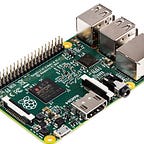How to Solve Python Indentation Errors in 5 Easy Steps
IndentationError is one of the most common errors encountered by Python developers, especially those who are new to the language. Python relies on indentation to define the structure of code blocks, like loops, conditionals, and functions. Any inconsistency in indentation can lead to an IndentationError, disrupting the program’s flow. Below are five steps you can take to identify and resolve these errors effectively.
Step 1: Use a Consistent Indentation Style
Python allows you to use either tabs or spaces for indentation, but you must remain consistent throughout your code. Mixing tabs and spaces will lead to an IndentationError. Many developers recommend using four spaces per indentation level:
def my_function():
for i in range(10):
print(i)Ensure your text editor or IDE is configured to insert spaces when you press the tab key. Most modern editors have this feature and can be configured via their settings.
Step 2: Check for Inconsistent Indentation
Inconsistent indentation means that different parts of your code may be indented differently. This is one of the most common causes of IndentationError. Here is an example of inconsistent indentation:
def my_function():
for i in range(10):
print(i)
return iIn this case, the return statement is not correctly aligned with the for loop, which will cause an error. Make sure all statements at the same level of indentation are aligned correctly.
Step 3: Utilize Your IDE’s Indentation Features
Most modern Integrated Development Environments (IDEs) come with features to automatically correct indentation. For example, VS Code, PyCharm, and others can reformat your code to ensure proper indentation. Use these tools to your advantage:
- In VS Code: Select the code block and press Shift+Alt+F.
- In PyCharm: Go to Code > Reformat Code.
These features ensure that the entire code block follows consistent indentation rules.
Step 4: Leverage Linters
Linters are tools that analyze your code for potential errors, including indentation issues. Popular linters like Pylint and Flake8 can be integrated into your development workflow to catch these errors:
pip install pylint
pylint myscript.pyBy running a linter on your code, you can identify and correct indentation errors before they become a problem.
Step 5: Manually Review Your Code
While automated tools are invaluable, there is no substitute for manually reviewing your code. Take a step back and scan through your code to ensure that all blocks are properly indented. Sometimes the human eye can catch things that tools might overlook:
if True:
print("Hello, World!")
print("This line is incorrectly indented")By visually inspecting your code, you can catch indentation errors that might slip through automated checks.
Conclusion
Indentation errors can be frustrating, but they are easily fixable if you follow these steps. Use a consistent indentation style, check for inconsistencies, utilize your IDE, employ linters, and manually review your code. By incorporating these practices into your coding workflow, you’ll minimize the likelihood of encountering IndentationError and improve your overall code quality.
If you found this article helpful, feel free to share it with others who might benefit from it. Happy coding!
